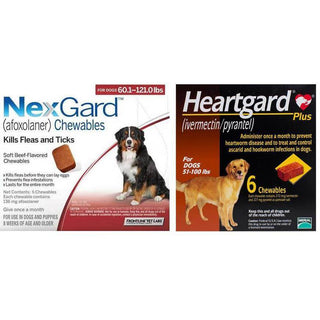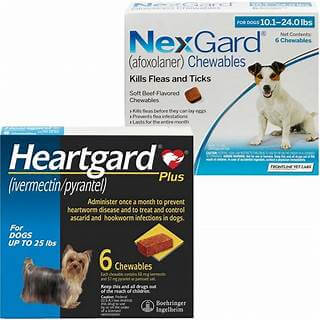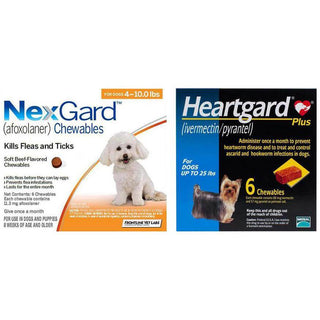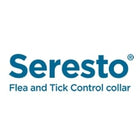Introduction
Pet medications are crucial in keeping our furry friends healthy – from protecting against parasites to treating illnesses. However, even the best flea and tick treatment or heartworm prevention can sometimes cause side effects. Pet parents should be aware of these common side effects and know how to manage them. This post discusses typical side effects of common pet medications (like flea preventatives and heartworm prevention for dogs) and offers practical tips to keep your pet safe and comfortable.
This guide covers several popular pet medications – from heartworm preventatives to flea & tick treatments – and explains how to address any side effects to keep your pet comfortable and healthy throughout their treatment.
Heartworm Prevention for Dogs: Common Side Effects and Management
Heartworm preventatives are essential in many areas – especially warm regions where mosquitoes thrive. Dog's heartworm prevention products include popular names like Heartgard Plus, Advantage Multi (Advocate), Simparica Trio, Sentinel Spectrum, and Revolution. These medications are generally safe and highly effective, but a few side effects can occur in some pets.
Common side effects: Oral heartworm medications (chewables or tablets) occasionally cause mild digestive upset. Your dog might experience vomiting, diarrhea, or decreased appetite shortly after taking the dose. Some dogs may also be a bit lethargic or sleepy for a day. Topical heartworm preventatives (often combined with flea prevention) could cause minor skin irritation at the application site.
How to manage: If your dog has a sensitive stomach, give heartworm pills with food to reduce nausea. Provide plenty of fresh water and watch your dog for a few hours after giving the medication. Mild digestive issues often pass on their own within a day. However, consult your veterinarian if vomiting or diarrhea persists or seems intense. In case of any severe reaction (e.g., collapse or severe vomiting), seek veterinary care immediately.
Flea and Tick Treatments: Side Effects and Safety Tips
Protecting pets from fleas and ticks is vital, especially in states with year-round warm climates. Flea and tick products are topical spot-on treatments, oral chews, or collars. When choosing the best flea and tick treatment for your dog or cat (for example, Frontline Plus topical, NexGard chewables, Bravecto tablets, or Advantix spot-on), it's important to know what side effects might occur.
Common side effects: Topical or collar treatments can sometimes cause skin irritation at the contact site, leading to redness, itching, or hair loss. Pets may also drool or vomit if they lick the bitter-tasting medication off their fur. Oral flea preventatives (like NexGard or Bravecto) occasionally cause vomiting, diarrhea, or lethargy after dosing. In rare cases, certain oral flea/tick medications have been associated with neurologic reactions such as tremors or seizures, but most pets tolerate these treatments without serious issues.
How to manage: Always apply spot-on treatments correctly – part the fur and put it on the skin where your pet can't lick. If you see skin irritation, bathe your pet with a mild shampoo to remove residue. Make sure flea collars are fitted properly (not too tight). If your pet vomits after an oral flea medication, ask your vet if you should give the next dose with food or switch to another product. Observe your pet for a few hours after any new flea/tick treatment. Contact a veterinarian immediately for advice if you see any severe symptoms (such as difficulty breathing or seizures).
Tips for Managing and Minimizing Side Effects
Even when we know side effects can happen, we want to do our best to prevent them or lessen their impact. Here are some practical tips to keep your pet comfortable and safe when starting any new medication:
- Use pet-specific medications: Always give medicines made for pets as directed by your vet. Never use human drugs on your pet without veterinary approval, and store all pet medications securely out of reach.
- Follow the prescribed dosage and instructions: Giving the correct dose at the recommended intervals helps avoid overdoses or unnecessary side effects. For example, certain meds should be given with food, while others might need an empty stomach – always read the label or vet directions.
- Introduce one new medication at a time (if possible): When your pet needs multiple treatments, stagger starting them if you can. If a side effect occurs, it's easier to identify the culprit.
- Observe your pet after medication: Set aside time to monitor your pet for a couple of hours after giving a new med, especially the first dose. Look for signs of upset like drooling, restlessness, or anything unusual. Early detection of side effects means you can respond quickly.
- Have emergency contacts ready: Know your vet's after-hours number or the nearest emergency animal clinic.
Most pets take their medications without any problems – and the health benefits of preventatives and treatments usually far outweigh the risks of side effects. If your pet only shows mild side effects (like slight drowsiness or a soft stool), you can typically manage those at home with the tips above. But never ignore severe or worsening symptoms. If a side effect is painful, lasts more than a day, or makes your pet uncomfortable, contact your veterinarian for advice. They may adjust the dose or switch the medication to help your pet feel better.







